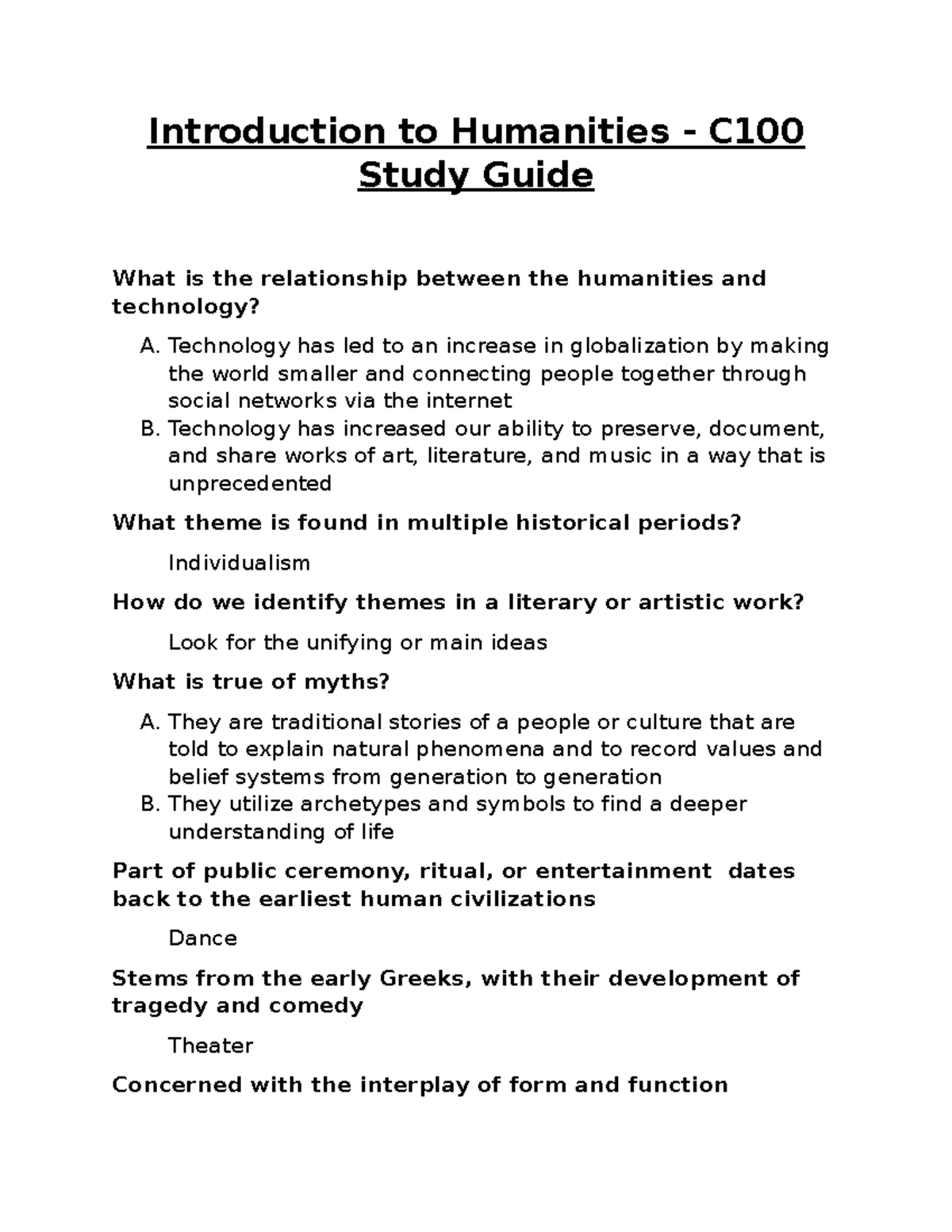Introductory humanities courses are essential to fostering a love for the arts and humanities among first-year students. As part of a fresh initiative, universities aim to enhance course engagement in these vital fields, especially in light of declining enrollment across the nation. By incorporating diverse perspectives and relevant topics into the first-year curriculum, educators are redefining how humanities education is approached. Dean Sean Kelly emphasizes the importance of crafting courses that resonate with students, sparking their curiosity and encouraging exploration. These new offerings not only strive to capture student interest but also aim to illustrate the intrinsic value of studying human culture, literature, and philosophy.
Beginning with foundational studies in the liberal arts, these introductory courses serve as gateways to understanding the rich tapestry of human expression and inquiry. By engaging first-year undergraduates through dynamic and relatable content, institutions seek to reverse trends of diminishing interest in the liberal arts. This renewed focus on core themes, ethics, and critical thinking establishes an inviting academic atmosphere for newcomers. Moreover, the curriculum emphasizes the significance of storytelling and artistic expression in shaping our understanding of humanity. With a multicultural lens and an emphasis on contemporary issues, these programs are well-positioned to motivate students and enrich their educational experiences.
The Importance of Introductory Humanities Courses
Introductory humanities courses play a vital role in shaping a student’s academic journey and their understanding of the world. These foundational classes expose first-year students to a range of disciplines within the arts and humanities, allowing them to explore cultural, historical, and ethical questions that define the human experience. With a significant number of students initially expressing interest in the humanities, it’s crucial to design courses that captivate their curiosity and encourage them to delve deeper into these subjects. As noted by Dean Sean Kelly, engaging introductory courses can help bridge the gap between students’ initial interests and their eventual academic pursuits.
Moreover, the structure and content of introductory courses can significantly influence enrollment trends in the arts and humanities. Rather than being seen as mere academic requirements, these classes should be crafted to highlight the unique value of humanities education — fostering critical thinking, empathy, and cultural awareness. Engaging pedagogies and relevant content can transform student perceptions, making them more likely to embrace further studies in these fields. As institutions face declining enrollment in the humanities, reevaluating and revitalizing the first-year curriculum’s offerings is more important than ever.
Engaging Students with Innovative Course Offerings
To combat declining interest in the humanities, universities are rethinking their curricula. For example, Harvard’s introduction of nine new introductory courses is aimed at meeting students where they are and igniting their passion for the arts and humanities. These courses emphasize contemporary issues and relatable themes, using innovative teaching methods to captivate students. By incorporating diverse perspectives and modern narratives, educators are able to create a more dynamic learning environment that resonates with first-year students.
Innovative course offerings not only engage students but also highlight the significance of the humanities in today’s world. By focusing on pressing societal issues, such as migration and technology, courses like “Migration and Border Crossing in Film and Photography” and “Humanity, Technology, and Creation” are designed to provoke critical thought and stimulate discussion. Such thematic relevance encourages students to see the application of humanities education in understanding complex global problems, ultimately fostering a deeper connection to the material and a desire to continue their studies.
The Role of Faculty in Cultivating Interest in Humanities
Faculty play a crucial role in shaping students’ experiences within introductory humanities courses. Their passion for the subject matter can inspire students to engage more deeply with the content. Professors like those at Harvard, who are consciously adapting their teaching strategies and course materials, can create an environment that encourages inquiry and exploration. By drawing on their own research and professional experiences, faculty members can provide students with compelling insights into the relevance of the humanities in contemporary life.
Additionally, the ability of faculty to connect academic concepts to real-world applications can transform students’ attitudes toward the humanities. For instance, courses incorporating literature, film, and art can serve as lenses through which students can examine cultural narratives and their own identities. This connection not only enhances course engagement but also instills a lifelong appreciation for the arts and humanities, helping to ensure that students recognize the intrinsic value of these disciplines.
Contemporary Themes in Humanities Curriculum Design
In the context of declining enrollment, integrating contemporary themes into the humanities curriculum is essential for attracting and retaining students. Modern issues such as identity, technology, and social justice are increasingly relevant to today’s students and can be woven into the fabric of introductory courses. By centering discussions around these topics, educators can make the study of humanities more appealing and relevant. For example, courses addressing migration and border experiences can resonate deeply with students living in a globalized world.
Furthermore, by addressing themes that matter to students, humanities courses can foster a sense of community and shared experience. Students are more likely to engage with content that reflects their own lives and challenges. This connection allows for a richer educational experience, where students feel their contributions to discussions are valued and relevant. Ultimately, modernizing the humanities curriculum to include contemporary issues not only enhances enrollment but also enriches student learning.
The Impact of Course Structure on Student Engagement
The structure of introductory humanities courses can greatly influence student engagement and interest levels. By designing courses that encourage active participation and critical thinking, educators can create a vibrant classroom atmosphere that invites exploration and dialogue. Innovative course designs, such as collaborative projects or interdisciplinary approaches, can further enhance engagement and help students see the interconnectedness of different fields within the humanities.
Moreover, integrating diverse teaching methods, such as discussions, debates, and creative assignments, allows students to learn according to their individual strengths and interests. This variety can enhance their overall learning experience, making humanities courses not only more appealing but also more valuable. By crafting courses that invite exploration and personal connection to the material, educators can help mitigate the trend of declining enrollment and instill a lasting appreciation for the arts and humanities.
Fostering a Lifelong Appreciation for Humanities
One of the ultimate goals of introductory humanities courses is to foster a lifelong appreciation for the arts and humanities. By engaging students with compelling content and innovative teaching methods, these courses can inspire curiosity and a desire to learn more about cultural and philosophical questions throughout their lives. When students recognize the intrinsic value of humanities education — beyond mere academic requirements — they are more likely to carry these lessons with them into their future endeavors.
Moreover, instilling a love for the humanities can lead to increased enrollment and participation in advanced courses and programs. Students who feel a connection to the material and understand its significance are more inclined to pursue further studies. By cultivating a nurturing and stimulating environment in introductory courses, educators can play a pivotal role in transforming students’ views of the humanities, ultimately securing a vibrant future for these disciplines in higher education.
Leveraging Interdisciplinary Approaches in Course Design
Interdisciplinary approaches in humanities course design can enhance student engagement by bridging gaps between different fields of study. For example, a course that combines literature, philosophy, and cultural studies can provide students with a broader understanding of the human condition, encouraging them to draw connections between varied disciplines. The integration of diverse perspectives not only enriches the learning experience but also encourages students to think critically about the material and its relevance in a multifaceted world.
Moreover, interdisciplinary courses can attract students from varied academic backgrounds, promoting a diverse classroom environment that fosters more stimulating discussions. When students feel their unique perspectives are valued, they are more likely to engage deeply with the content. By leveraging interdisciplinary designs, humanities courses can create a more inclusive and interesting curriculum that appeals to a wider range of students, ultimately combating enrollment declines.
Creating Meaningful Learning Experiences in Humanities Courses
To truly engage students, introductory humanities courses must prioritize creating meaningful learning experiences. This can be achieved by designing assignments and discussions that encourage students to connect personally with the material. For example, incorporating reflective writing assignments or group projects that focus on real-world applications can make the content more relevant and impactful. By fostering a sense of ownership over their learning, students are more likely to engage deeply with the subject matter.
In addition, teachers who create a supportive and inclusive classroom environment can significantly enhance students’ learning experiences. Actively encouraging dialogue and diverse perspectives can empower students to voice their thoughts and ideas. When students feel comfortable sharing their viewpoints, they are more likely to invest themselves in their studies, leading to a richer educational experience and increased interest in pursuing further coursework related to the humanities.
Addressing Challenges in Arts and Humanities Enrollment
One of the critical challenges facing the arts and humanities is declining enrollment. Research points to various factors contributing to this trend, including perceived irrelevance and insufficient emphasis on these fields in high school curricula. To address these challenges, universities must actively promote the value of a liberal education, highlighting how skills gained through the study of humanities — such as critical thinking, communication, and cultural awareness — are applicable across various career paths.
Additionally, initiatives like Harvard’s introduction of new freshman courses aim to revitalize interest in the humanities. By selecting engaging and relevant topics, educators seek to counteract the narrative that the humanities are less valuable than STEM fields. This proactive approach not only helps to combat enrollment decline but also reaffirms the arts and humanities’ significant role in a well-rounded education.
Transforming Perceptions of Humanities Through Innovative Teaching
Innovative teaching methods can transform students’ perceptions of the humanities, showcasing the relevance and critical importance of these disciplines in our lives. By incorporating interactive technologies, digital media, and experiential learning opportunities, educators can engage students in new and exciting ways. For instance, using multimedia presentations in literature classes can make classic texts resonate with modern audiences, bridging generational gaps and fostering deeper understanding.
In addition, incorporating service-learning projects or community engagement can further enhance the learning experience by allowing students to apply their knowledge in real-world contexts. These practical applications underscore the relevance of the humanities in addressing contemporary societal issues, making the study of arts and humanities not only an academic pursuit but also a vital aspect of civic engagement. Thus, through innovative teaching, educators can effectively reshaping how students view and value the humanities.
Frequently Asked Questions
What are introductory humanities courses and why are they important?
Introductory humanities courses are foundational classes that introduce students to key concepts, texts, and methodologies in the arts and humanities. They play a crucial role in the first-year curriculum, engaging students with fundamental questions about culture, society, and human experience. These courses are designed to spark interest in humanities education and can significantly influence students’ academic trajectories.
How do introductory humanities courses address the issue of declining enrollment in the arts and humanities?
Introductory humanities courses are being restructured to attract more students by making them more engaging and relevant. Initiatives like the one led by Dean Sean Kelly aim to counteract declining enrollment by offering diverse and appealing course options that highlight the intrinsic value of the humanities, making them more attractive to first-year students.
What types of topics are covered in modern introductory humanities courses?
Modern introductory humanities courses cover a wide range of topics, from examining classic literature and philosophy to exploring contemporary issues in society. Courses like ‘Migration and Border Crossing in Film’ and ‘Humanity, Technology, and Creation’ address current cultural phenomena while grounding students in essential humanities concepts, fostering a deeper understanding of the human experience.
Why is it necessary to rethink the design of introductory humanities courses?
Rethinking the design of introductory humanities courses is necessary to engage students effectively and combat the trend of declining enrollment. By focusing on what resonates with first-year students and emphasizing the relevance of humanities to their lives, educators can create courses that not only attract interest but also instill a lasting appreciation for arts and humanities.
What role do introductory humanities courses play in the broader first-year curriculum?
Introductory humanities courses play a pivotal role in the first-year curriculum by providing students with essential critical thinking skills, cultural literacy, and an appreciation for diverse perspectives. These courses serve as gateways to deeper exploration in the humanities, allowing students to discover their passions and shaping their academic journeys.
How can introductory humanities courses inspire students to pursue further studies in the arts and humanities?
By offering stimulating content and engaging pedagogical approaches, introductory humanities courses can inspire students to delve deeper into the field. Courses that highlight the intrinsic value of literature, philosophy, and the arts can transform initial interest into a commitment to further study in the humanities, enriching the academic community.
What impact can effective introductory humanities courses have on students’ understanding of cultural issues?
Effective introductory humanities courses can profoundly impact students’ understanding of cultural issues by encouraging critical analysis and fostering empathy. By examining diverse narratives and artistic expressions, students develop a nuanced perspective of societal challenges, making them more informed and compassionate individuals.
What approaches are universities taking to modernize introductory humanities courses?
Universities are modernizing introductory humanities courses by integrating contemporary subjects, interdisciplinary methods, and innovative teaching strategies. This includes combining traditional critical analysis with creative practices, ensuring that courses are responsive to today’s cultural and technological landscape while enticing students who may otherwise overlook the humanities.
| Key Point | Description |
|---|---|
| Introduction of Nine New Courses | Starting in the Fall 2025, Harvard will launch nine new introductory courses in the Arts and Humanities to engage first-year students and counter declining enrollments. |
| Issues with Current Courses | Existing introductory courses fail to captivate students, leading many to shift their interests away from arts and humanities. |
| Inspiration from Philosophy Dept. | The success of the Philosophy Department, which increased enrollment significantly, influenced the new course designs that focus on engaging students with fundamental human questions. |
| Highlighting Student Experience | Courses aim to provide intrinsic value, emphasizing the importance of understanding human culture through literature, philosophy, and art. |
| Interdisciplinary Approach | New courses will integrate various aspects of the humanities, such as literature and creative writing, enhancing students’ comprehension of both. |
| Course Offerings | Highlighted courses include ‘Introduction to the Medical and Health Humanities,’ ‘Migration and Border Crossing in Film and Photography,’ and ‘Reading for Fiction Writers’. |
Summary
Introductory humanities courses at Harvard are being revamped to re-engage students who may have drifted away from these essential fields of study. As part of an initiative led by Dean Sean Kelly, nine new courses are set to launch in Fall 2025 aimed at addressing declining interests in the arts and humanities. By focusing on intrinsic value and compelling content, these courses are designed to meet students where they are in their academic journeys and foster a deeper understanding of human culture through literature, philosophy, and art.




